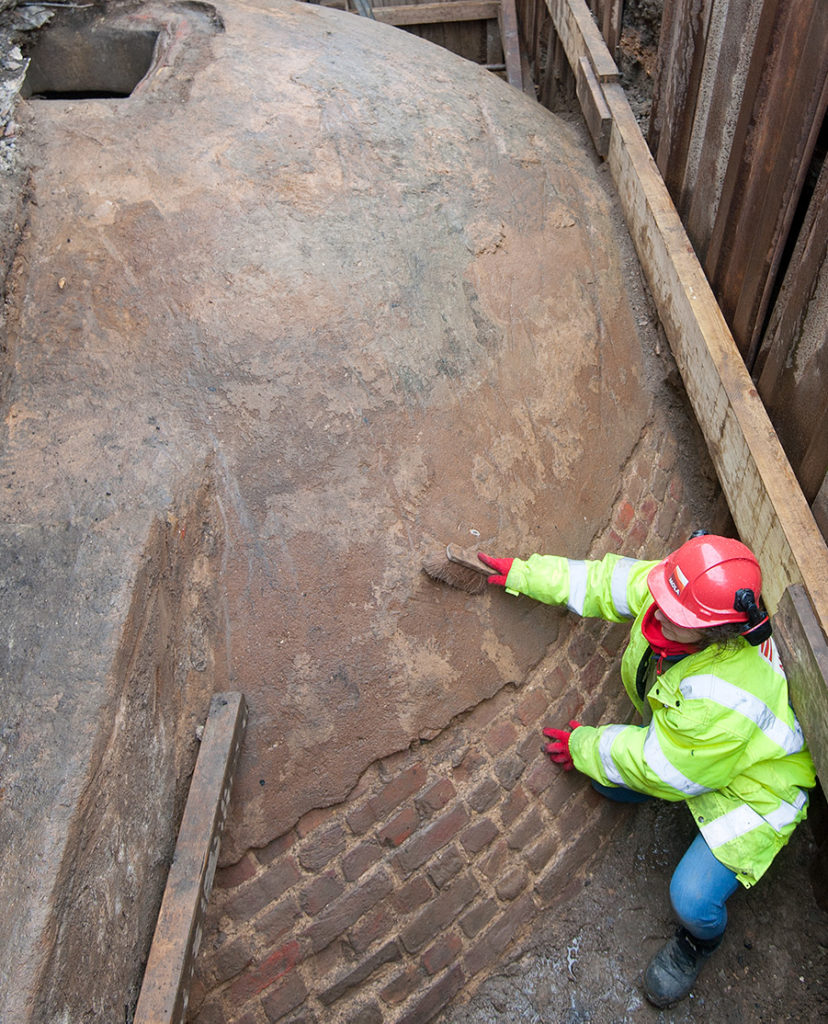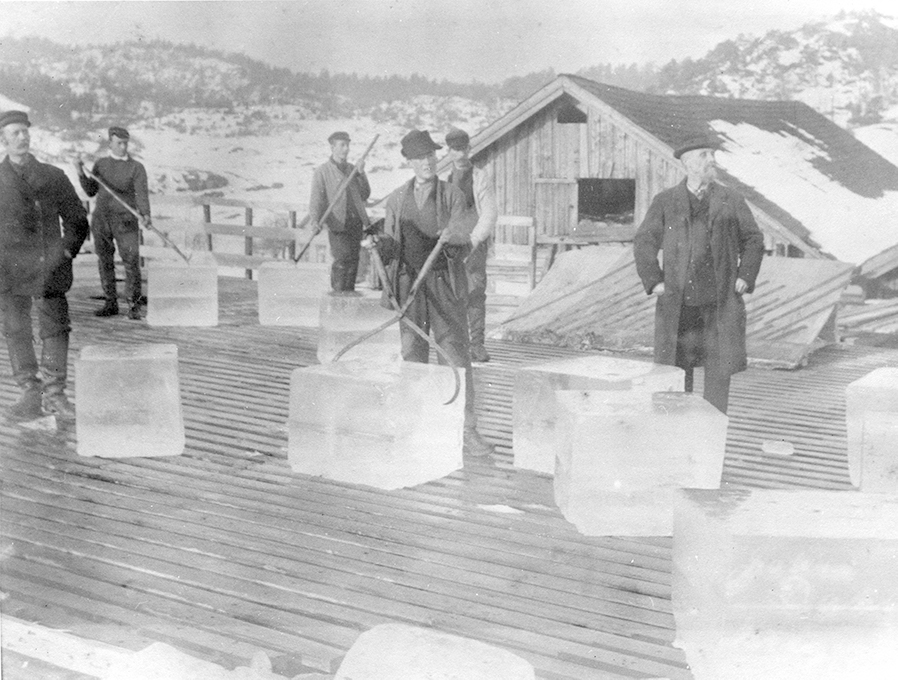THE INSIDE OF A REDISCOVERED ICE HOUSE NEAR REGENT’S PARK IN CENTRAL LONDON.

Late Eighteenth-Century Ice House Found in London

Archaeologists now discovered a link to the lost ice trade of the capital with the rediscovery of an enormous 18th-century ice store, under the most prestigious addresses in London, the existence of which has almost entirely been forgotten.

The cavernous underground structure was built in the 1780s just south of Regent ‘s Park and is the earliest known large-scale commercial ice-store, which has led to it being designated a scheduled monument by Historic England. There are plans to make it accessible to the public at certain dates during the year once the development is complete.
The store sometimes called an ice well or ice house, It was excavated this summer by archaeologists working on the new development of Park Crescent West, the grand stucco-terrace built at the site by John Nash, the Buckingham Palace Architect, 40 years after the ice store was built.

“There was always an understanding that there was an ice house here somewhere, but we weren’t sure where,” says David Sorapure, the head of built heritage at Museum of London Archaeology (Mola), which has been working on the site with developers Great Marlborough Estates. “Even after we discovered where the entrance was, we weren’t quite sure how big it was, or how you got in.”
The egg-shaped cavern, 9.5 metres deep and 7.5 metres wide, had been backfilled with demolition rubble after the terrace was bombed during the war, requiring three months of careful excavation before its structure could be fully revealed.
Once cleared, it revealed a wonderfully preserved brick void, built to a much higher standard than the stately stucco terraces that surround it, according to Sorapure, and still structurally secure, even as the Jubilee line thunders less than 10 metres beneath it.
The man behind the brick-built structure, Samuel Dash, had a family link to the brewing industry, which archaeologists believe may have spurred its original construction in the early 1780s.
The store really came into its own in the 1820s, when the pioneering ice merchant and confectioner William Leftwich began importing high-quality ice from Norway for the first time. In 1822, he charted a vessel that brought 300 tonnes of a frozen lake, which he transported up the new Regent’s canal to be lowered into the ice store through a small opening on top.

Workers would then climb down into the void from a small corridor near the top, to chip off blocks when required. Insulated with hay, these were then shipped by horse and cart to restaurants and private addresses and also, potentially, to some of the medical establishments nearby, according to Danny Harrison, a senior archaeologist at Mola.
“We know they used to use ice to numb things, for doing dentistry, and we have Harley Street and Wimpole Street near here … There is a good chance they were getting clean ice from here.
“By emptying and being able to investigate this wonderful space, it’s led to further research questions, and that’s where we are going to spend our time now.”
For Sarapure, the store’s significance is a link to a once-lucrative but now almost entirely forgotten trade. “At one point there were probably a couple of thousand ice wells in London, but most of them were probably quite small.
“What this one does and why it is significant is it bridges the gap between [the time when] ice was only for the very wealthy, to a kind of mass availability of ice, which you get from the 1830s and 40s. And this occupies that 50-year space. It’s ice for everyone, eventually.”